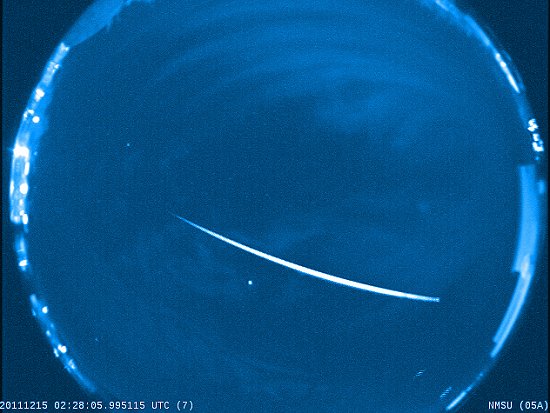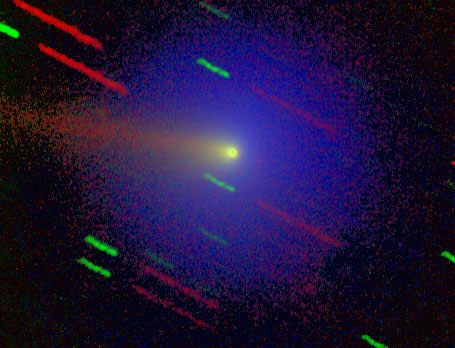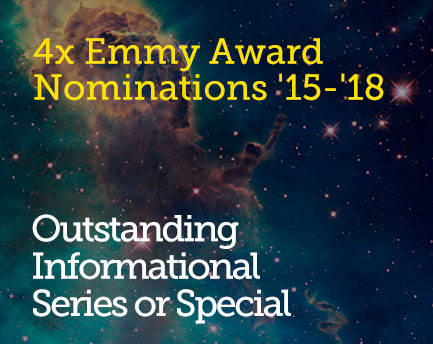December 11, 2012 4:23 pm
This Week Only! Free Meteor Shower and a Special Bonus Offer!

Geminid over southern New Mexico, Dec. 14, 2011. Moving at 80,000 mph the ¾” meteor flared brighter than the planet Venus before burning up, according to NASA.
Image credit: Marshall Space Flight Center, Meteoroid Environments Office, Bill Cooke
If you thought the Perseids were great this year, then you’re in for a treat, because the Geminids are coming this week and there’s every reason to hope they’ll be even better. In fact, many predict that it will be the best meteor shower of the year.
The Geminids peak on the night of Dec 13 thru the morning of December 14th. And if you’re paying attention, you also know that since the New Moon occurs earlier that day, at 3:42 a.m. December 13th, it won’t be getting in the way of Geminid-gazing.
A little after midnight we could see as many as 120 meteors an hour. And unlike the Perseids, the Geminids are slowpokes, sometimes leaving trails that can last a couple of seconds.
The Geminids are debris from 3200 Phaethon, which is a rocky object that is not a comet. In fact, according to NASA Astronomer Bill Cooke, the Geminids “defy explanation.” (For more on this mystery, check out this article on NASA Science News.) By the way, NASA is having a chat during the shower, and Bill Cooke is scheduled to be there. You can find out more about the chat here.
They get their name because when you follow their trails backwards, they all meet up within the constellation of Gemini.
Best time to see them is late night December 13 until dawn, December 14th, but with no moon getting in the way, you might get a great show even earlier in the evening. Around midnight look overhead; earlier, face east and look up but not all the way.
ADDED BONUS METEOR SHOWER:

Comet Wirtanen, shown as a three color image: cometary H20+ (red), dust (green) and neutral CN gas (blue)
Photo Credit: Max-Planck-Institut f|r Aeronomie, courtesy T. Credner, J. Jockers, T.Bonev
If you act right now, for a limited time, you could get a second meteor shower at no extra charge! That’s right – extra meteors at no extra charge! NASA is saying that Earth may pass through the debris stream left by Comet 46P/Wirtanen between December 10-14, adding up to 30 meteors per hour to your previously scheduled meteor shower adventure. (For more detail, check out this article on Earthsky.org.)
That’s it for now. Keep Looking Up!
–Jeffrey Simons
Get the most out of StarTalk!
Ad-Free Audio Downloads
Priority Cosmic Queries
Patreon Exclusive AMAs
Signed Books from Neil
Live Streams with Neil
Learn the Meaning of Life
...and much more

 Become a Patron
Become a Patron

